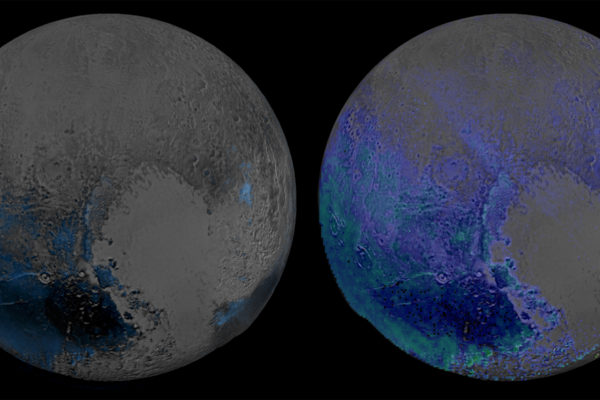Could there be life in Pluto’s syrupy sea?
Pluto is thought to possess a subsurface ocean, which is not so much a sign of water as it is a tremendous clue that other dwarf planets in deep space also may contain similarly exotic oceans, naturally leading to the question of life, said one co-investigator with NASA’s New Horizon mission to Pluto and the Kuiper Belt.
Ray Arvidson offers updates on Mars rover missions
With all the fanfare about Mars rover Curiosity landing safely on the Red Planet on Aug. 6, it’s easy to forget that there’s already a rover on Mars — an older, smaller cousin set to accomplish a feat unprecedented in the history of Solar System exploration. WUSTL’s Raymond E. Arvidson is playing key roles in both Mars missions.
Saturnian moon shows evidence of ammonia
Data collected during two close flybys of Saturn’s moon Enceladus by NASA’s Cassini spacecraft add more fuel to the fire about the Saturnian ice world containing sub-surface liquid water, according to a report in the July 23 issue of the journal Nature that is co-authored by a planetary researcher from Washington University in St. Louis.
Calculations favor reducing atmosphere for early earth
David Kilper/WUSTL PhotoFegley and Schaefer examine a meteorite.Using primitive meteorites called chondrites as their models, earth and planetary scientists at Washington University in St. Louis have performed outgassing calculations and shown that the early Earth’s atmosphere was a reducing one, chock full of methane, ammonia, hydrogen and water vapor. In making this discovery Bruce Fegley, Ph.D., Washington University professor of earth and planetary sciences in Arts & Sciences, and Laura Schaefer, laboratory assistant, reinvigorate one of the most famous and controversial theories on the origins of life, the 1953 Miller-Urey experiment, which yielded organic compounds necessary to evolve organisms.

